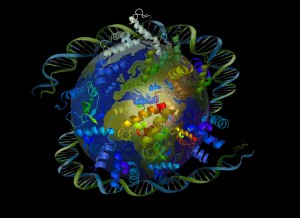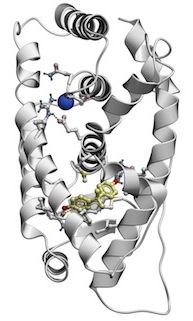TiPED™ is a five-tiered system. It is designed to help chemists determine potential endocrine disrupting activity of a new chemical.
TiPED was conceived as a tool for new chemical design (though it can be used for existing chemicals), thus it starts with a chemist theoretically at “the drawing board”. TiPED consists of five testing tiers ranging from broad in silico evaluation up through specific cell- and whole organism-based assays.
Most assays identified for use in TiPED are not “validated” in the regulatory sense, because they have not been reviewed and accepted by agencies that oversee the validation process. That process can take years, with the unfortunate consequence that validated assays rarely reflect the current state of scientific understanding. For a field, endocrine disruption, that has developed so strongly over the past 10 years, that is a distinct handicap for validated assays.
That does not, however, mean that assays in TiPED are invalid. The assays presented in TiPED are based on widely accepted scientific principles, commonly used in research laboratories funded by the National Institute of Health., and are performed with a battery of known controls (both positive and negative) to provide reliable information to the chemist.
To be effective at detecting endocrine disruption, a testing protocol must be able to measure potential hormone-like or hormone-inhibiting effects of chemicals, as well as the many possible interactions and signaling sequellae chemicals may have with cell-based receptors. Accordingly, we have designed this protocol to broadly interrogate the endocrine system.
No single tier in the TiPED system will reveal the entire picture; the tiers are designed to reinforce each other. While each Tier will be informative, confidence about whether or not a compound alters endocrine function is increased by combining evidence from multiple tiers. Ideally, tests from multiple tiers will be conducted, examining endpoints across cell and animal types, encompassing different life stage effects and a range of doses.
How the Tiers Work:
Tier 1 offers computer-based approaches that can be used to begin assessment of a molecule. These approaches can be subdivided in two categories: searching existing databases of known EDCs, and in silico predictive computer models.
Tier 2 consists of targeted-cell assays, or tests that can assess whether or not a certain cell target (such as a hormone receptor or a gene) is turned “on” or “off” by a given chemical.
Note that TiPED’s first two tiers are “target” based assays. That is, these tests identify chemicals that interact with specific target proteins to modulate their activity. Tier 1 predicts activity using in silico modeling of protein-small molecule interactions. Tier 2 tests targeted impact of chemicals on the activity of transcription factors, such as nuclear hormone receptors and other modulators of endocrine signaling pathways.
In contrast, the assays in Tier 3 are “process and function” based. Assays in the Cell-Process tier integrate cellular functions to reveal the activity of a test chemical on an endocrine signaling pathway that may be cell-type (or tissue-) specific. Thus Tier 3 can pick up on integrated endpoints that the first two “targeted” tiers would miss.
Tier 4 consists of fish- and amphibian whole animal tests. While Tier 3 begins to integrate endpoints, Tiers 4 and 5 do this to a much greater degree. Tier 4 looks for chemical impacts on fish or amphibian reproduction, development, and behavior. At this level we do not isolate EDC activity per se, but look for morphological or behavioral changes which are, to a significant degree, hormonally regulated.
Finally there is Tier 5: mammalian tests. Tests on mammals are critical if one wants to be as certain as possible that a chemical is not an EDC. Each of the previous tiers can give an indication of the probability of particular chemical’s potential EDC activity, but there remains no absolutely reliable substitute at this point in time for mammalian tests.
The mammalian endocrine system is complex and incompletely understood. Computer models, cell-, tissue-, and fish-based tests can lay out a strong case for or against a compound’s having EDC characteristics, but the highest degree of confidence still relies on mammalian assays. Most significantly, tests at this level can catch effects for which the endocrine pathways are not known.
Note TiPED will not detect all possible mechanisms of endocrine disruption, because scientific understanding of these phenomena is advancing rapidly. Going forward, TiPED or any EDC testing tool must continue to incorporate new science as it emerges.
For specifics on getting started, see How To Use TiPED or call: (434-466-2255) email: info@tipedinfo.com


